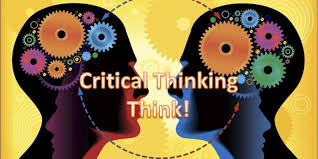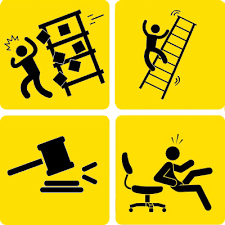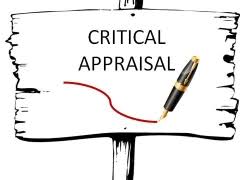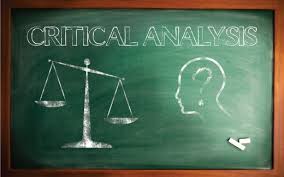Outline of Use of Power to Authorize Staff Order Instructions: 1.Introduction: outline of use of power to authorize staff

2. define power and empowerment
3.Method: use power to deputizing form
4. other than power, how to empower subordinates e.g. coaching
5. conclusion
The assignment format:
3cm left and right margins
doubled spaced
Font: Arial
Font size: 12pt
All borrowings from other sources must be properly referenced and a reference list must be included at the end.
Outline of Use of Power to Authorize Staff Sample Answer
Introduction
Effective and empowering leadership in modern healthcare institutions is relatively useful in advancing profitability and skills among nurses and other health professionals. Furthermore, in a real situation, successful health leaders use their authority and power in empowering their subordinate staffs. The act of empowering subordinate staffs is relatively useful in advancing services offered in healthcare institutions. Additionally, the process of empowering subordinate staffs increases teamwork among healthcare professionals (Tomey, 2009). Therefore, based on the current trend in contemporary healthcare institutions, the use of the available resources and powers in empowering healthcare professionals is relatively critical in advancing their efficiency and effectiveness
Based on the available numerical evidence, there are justifiable and compelling reasons for empowering nurses and other health professionals. In most instances, powerless nurses are unproductive and ineffective in their operations. In addition, powerless nurses are always dissatisfied with their jobs and are more susceptible to depersonalization and burnouts. Therefore, nurses’ powers consist of three critical components, an appreciation that there are power and effect on their services, psychological beliefs on individual ability and power to perform, and the need to create the necessary environment for empowering nurses. Studies further reveal that competent nurses use their powers and position in advancing their professionals skills and improving community health status (Bradbury‐Jones, Sambrook & Irvine, 2008).
In addition, empowering of nurses is critical in helping them adopt and make effective utilization of emerging technology to improve healthcare services. However, although the healthcare sector has made tremendous changes in its operations, the available data reveals that there are insignificant changes in nurse training programs. For instance, studies indicate that despite endless effort to facilitate gender equality in modern healthcare services, 95% of nurses in the world healthcare institutions are women (Tomey, 2009). Furthermore, in spite of the existence of numerous feminist movements, women nurses lack the necessary power to execute their duties (Lautizi, Laschinger, & Ravazzolo, 2009). Therefore, to progress in the modern ever-changing and complicated healthcare sectors, health leaders and scholars should come up with reliable and productive policies for empowering nurses.
Definition of power and empowerment and Outline of Use of Power to Authorize Staff
Health professionals and scholars describe power as the ability to influence, control, and dominate other health professionals. In addition, power is the ability to ensure that other healthcare professionals undertake their responsibility with limited challenges and criticism. Power in the healthcare sector also involves individuals’ ability to mobilize the available resources and use their skills in helping an organization attain its goals and long-term plans. Furthermore, scholars reveal that health professional powers should include caring practices by nurses that help in empowering patients and family members. Modern scholars further view power as an infinite and positive force that helps in the establishment of the environment that frees professionals from unnecessary oppression and discrimination (Gilbert, Smith, & Leslie, 2010).
Health experts have identified several types of power, expert power, normative power, coercive power, and legal power. However, despite the existence of various powers in modern settings, the most effective and applicable form of power in the healthcare system is expert power. Health scholars define expert powers as individuals’ ability to influence other professionals by possessing the skills and knowledge that are essential and useful to others. An expert power also helps in ensuring that health professionals and most specifically nurses have healing and transformative powers. In most instances, healing and transformative power are critical in supporting the power of caring that is essential among nursing professionals (Caspar & O’Rourke, 2008).
In modern healthcare settings, power is critical and necessary in influencing group and individual behaviors and professional skills. As a result, nurses require substantive powers in order to influence their actions, patients’ activities, physicians and skills, and operations of other healthcare professionals. In most instances, powerless nurses are ineffective and less influential in advancing the quality of services offered in modern healthcare institutions. In addition, powerless nurses express dissatisfactions with their job hence increasing changes for professionals turn and depersonalization. Furthermore, the existence of powerless nurses could lead to poor patient outcome. Equally, studies reveal that powerless nurses have limited morale and motivation of executing their duties (Stewart, McNulty, Griffin & Fitzpatrick, 2010).
In order to realize the significance of empowering nurses, nurse’s power over the nursing operation and practice should include educational factors, social needs, and cultural practices and values. Cultural and social factors should aim at eliminating the perception that nursing is the role of women. Instead, nursing professionals should involve both male and female professionals. The inclusion of both genders in the management of nurses will be critical in empowering the profession. On the other hand, educational factors should aim at improving nurses’ professional skills and position in the entire healthcare system. Historically, nurses attained their training in the hospital as opposed to colleges and universities. The act of training nurses in hospitals lower nurses’ status and relation with other healthcare providers.
Besides, studies indicate that a good number of nurses are diploma holders (Tomey, 2009). As a result, the low education level among nurses has regrettable effects in lowering the power and position of nurses in modern healthcare institutions. Therefore, improving the educational levels among nurses will be relatively useful in making nurses powers productive in modern healthcare institutions. In addition, the multiple entry levels to nursing professionals is a major challenge that the dissipate nurse influence in the modern healthcare system (Gilbert, Laschinger & Leiter, 2010).
Consequently, based on the current position and influence of nurses in modern health settings, the profession requires significant transformation. Current lack of power among nurses is due to societal reluctant to accept the role of nurses in advancing the society health situation. In addition, nurses are unwilling to insert their power and influence in modern healthcare institutions. Studies further reveal that nurses in undeveloped and developing states have difficulties in appreciating and acknowledging their influence and power to the society (Tomey, 2009). Furthermore, society views power as an outcome of masculinity and contrary to the caring role of nurses. Essentially, nurses’ role in a healthcare institution is more of femininity and caring that requires powerless professionals. Therefore, a good number of modern nurses are unwilling and reluctant to use and access power due to the nature of their profession (Rhéaume, Clément, & LeBel, 2011).
On the other hand, modern scholars collectively agree that health professionals acquire power through empowerment process. As a result, empowerment is the act of raising social structure in the workplace that enables employees to get satisfied with their jobs. In most instances, empowerment emerges from relationships as opposed to influence, authority, and control. In addition, empowerment involves two critical steps, group attribute and change in the individual trait. Therefore, empowerment may emerge from own psyche or working environment. Studies reveal that highly motivated nurses have the ability and skills of empowering and motivating others thorough systematic sharing of new ideas and innovations. Furthermore, empowered nurses have limited job strains and burnout in their operations (Cole, Ouzts, & Stepans, 2010).
On the contrary, disempowered nurses experience a sense of frustration and are unable to act in demanding situations. Modern scholars further assert that the main contributor for powerless nurses is the fact that nurses do not understand the most effective mean of developing power from their relationship. Similar to women in society, nurses should empower themselves by establishing and maintaining an effective and productive relationship (McGuckin, Storr, Longtin, Allegranzi, & Pittet, 2011).
The theory of structural empowerment is relatively useful in explaining some of the most reliable means of establishing a mutual relationship among nurses. The theory states that the creation of productive relationship will be paramount in empowering healthcare professionals. Theory of structural empowerment further indicates that powers an opportunity in an organization are relatively vital in empowering healthcare professionals. Therefore, in order to support the entire empowerment process, healthcare institutions should provide empowerment opportunities to facilitate maximal organization success and effectiveness. Consequently, nurses have the mandate of using opportunities created by modern healthcare settings in empowering and positioning themselves effective in modern society.
Recent studies further present four critical contributors to nurses’ empowerment (Tomey, 2009). First, health leaders and managers should provide advanced empowerment opportunities by involving nurses in the management of the health centers. Secondly, healthcare leaders should ensure that nurses access all critical information regarding the operation and management of healthcare centers. Nurses should as well have access to all resources that could enhance systematic professional development. Finally, managers have the mandate of offering the necessary development support to all nurses (Regan & Rodriguez, 2011)
Modern health scholars further assert that empowerment is a continuous process and vary from one health institution to another. Furthermore, empowerment responds to a change in structural condition and work settings. In most instances, employees’ behaviors and empowerment occur when an organization is structured to provide the necessary development and empowerment opportunities. Further studies indicate that organizational interaction strategies are critical in empowering healthcare professionals. Therefore, in order to realize nurses’ empowerment, modern healthcare institutions should ensure that all professionals take an active role in an organization’s management, job enrichment, and in making meaningful organization decisions. The available literature further reveals that structural empowerment is critical in improving job satisfaction level. Consequently, nursing leaders should adopt a policy of empowering themselves by accessing empowering working environment structures (Mills & Hallinan, 2009).
Additionally, scholars observe that the empowerment is largely a psychological experience. In most instances, empowerment is personals attribute and motivational construct as opposed to environmental influence. In an ideal situation, empowerment plays a critical and noticeable role in enhancing personal and professional effectiveness and efficiency. In addition, studies indicate that the empowerment process involves four critical cognition initiatives impact, self-determination, meaning and competencies (Tomey, 2009). Meaning in the entire motivation process emerges when there is congruence between nurses’ job requirement and nurse behaviors, value, and beliefs. On the other hand, competence is confidence on individual ability to perform the set job successfully. Self-determination is the feeling of control that emerges from an individual skill and confidence. The impact is a sense of having the ability to influence critical organizational outcomes.
Use of power to deputise form
In modern healthcare institutions, nurses and other professionals use their power to deputise their leaders. Besides, a good number of successful healthcare professional leaders use their power in delegating their role to other health professionals including nurses. Therefore, based on the complicated nature of managing modern healthcare institutions, nurses have the role of understanding their duties as deputy leaders. Equally, modern training institutions should ensure that nurses have the necessary leadership skills and competence for enabling them to serve as deputy leaders. Nurses also have an individual and collective responsibility of practicing their leadership skills in their duties (Clark, 2010).
On the other hand, in delegating their works, nurse managers should understand and make effective utilisation of the existing empowerment models. First, before delegating power to subordinate staffs, nurse manager should identify duties that require delegation. In most instances, top leadership in modern healthcare setting delegate simple and less demanding work to their deputies. Therefore, understanding the most appropriate job to delegate will be useful in minimizing job confusion and conflict of interested. Equally, deputy nurses should have the skills of executing the delegated job with limited constraints. In addition, in order to empower nurses, nurse managers should ensure that they delegate most of their technical work to increase employees’ leadership experience
Serving as deputy nurse in any healthcare setting is also a critical undertaking in empowering nurses. Therefore, nurses who serve as deputy leaders should play a noticeable role in identifying and establishing the organisation objectives. Nurses should also understand and appreciate the significance of serving as deputy leaders. Deputy Nurses should also understand their influence in the new position and the most reliable mean of using the new position in empowering other nurses. In addition, deputy nurses have the mandate of understanding their role in improving services offered in healthcare institutions (Rezaei-Adaryani, Salsali & Mohammadi, 2012).
In an ideal situation, the role of empowered deputy nurses is to act and execute duties on behalf of their leaders. Deputy Nurses also have the mandate of demonstrating nurses’ role in enhancing the success of the entire organization. Therefore, in their deputy role, nurses should use the new opportunity and serve on behalf of other nurses. In addition, nurses who serve as deputy leaders should create favorable empowerment environment for other nurses. Deputy Nurses also have the mandate of demonstrating nurses’ leadership skills to other professionals. Studies further reveal that nurses who serve as deputy leaders have the role of developing effective and realistic action plans for improving nurses’ position in contemporary healthcare institutions (Rezaei-Adaryani, Salsali & Mohammadi, 2012)
Nurses who serve as deputy leaders should as well assist in developing skills of other employees in order to strengthen the entire organization. Ideally, nurses have essential skills that enable them to create a favorable development environment. Deputy Nurses also have the sole responsibility of making decisions on behalf of other health professionals. Therefore, deputy nurses have the mandate of allowing a subordinate to make critical mistakes and learn from the committed mistakes. In addition, empowered and successful nurses do not have the mandate of making decisions on behalf of subordinates. Instead, deputy nurses should use their positions in creating an environment for developing individual skills. In addition, the leader should desist from telling other nurses on the most effective means of executing their duties. Instead, nurse managers should help nurses in rectifying the committed mistakes (Clark, & Davis Kenaley, 2011)
How to empower subordinates
Healthcare managers have the mandate of empowering their staffs and most specifically nurses. Empowerment in healthcare settings describes employee mindset on autonomy, responsibility, capability, and accountability. Empowered health professionals have the skills and competence of ensuring that the organizations attain their objectives in the most cost-effective manner. Therefore, by considering the encouraging benefits of empowered health professionals, healthcare managers should empower their employees by creating and fostering the favorable environment that supports teamwork. So far, scholars have identified various strategies and methodology for empowering their workers (Gianfermi & Buchholz, 2011)
Coaching is one of the key empowerment strategies in contemporary healthcare institutions. Coaching empowers nurses by ensuring that they get the support essential in assisting them to attain their professional and personal goals and objectives. In the modern healthcare system, coaching involves two critical methods, formal training, and informal training. Formal training involves the process where healthcare professionals use their existing institutions to improve their skills. Formal training also involves the use of qualified professionals to help nurse understand their role in modern healthcare institutions. Moreover, formal training has a specific objective that it intends to achieve within a given period. On the contrary, informal coaching involves training employees in a non-formal environment. Largely, informal training takes place in working places and involves systematic interaction with colleagues and other health professionals. In most instances, informal motivation is less costly and does not have a specific target goal (Çavuş & Demir, 2010).
Creating a favorable and welcoming environment is also another reliable strategy for empowering professionals in modern health institutions. Studies reveal that creating a friendly and fun working environment is essential in empowering and motivating nurses (Rezaei-Adaryani, Salsali & Mohammadi, 2012). Nurses who work in a friendly environment get the chance to learn new skills from their colleagues and leaders. Creation of favorable working environment is also vital in ensuring that nurses have an effective opportunity for exercising their learned skills. Sharing of new ideas in a favorable working environment is also critical in empowering staffs. Leaders in modern healthcare institution also use the existing environment in identifying leadership skills among professionals. The favorable environment also gives leaders the necessary opportunity for challenging the underperforming professionals in a mutual and constructive manner (Rao, 2012)
Encouraging the creation of mutual and productive teamwork is also critical in empowering health professionals. Furthermore, in order to empower nurses, healthcare leaders should support and encourage outside team-building activities. Outside team-building enables nurses to understand operations and work that is outside their working place. In addition, successful and effective teamwork assists in supporting internal skills development. Groups also create reliable opportunity where professionals could interact and share productive skills that support both professionals and personal development. Teamwork also ensures that less performing professionals learn from their colleagues on some of the most productive skills for advancing their performance. In addition, healthcare leaders use groups to identify professionals with unique skills that can assist an organization to attain its goals (Men & Stacks, 2013).
The provision of skills training is also critical in empowering health professionals. A good number of the current successful healthcare institutions have useful and productive training programs. In most instances, successful organization use seminars and conferences for empowering their professionals. Seminars and conferences provide interaction opportunities for juniors professionals and experienced scholars. Seminars and other training opportunities are also vital in educating nurses on emerging skills and competence. Equally, training programs empower nurses by demonstrating leaders’ confidence in their skills and contribution. Healthcare leaders spend a huge amount of the institutional resources in ensuring that all employees have the opportunity of advancing their professional and personal skills. The act of spending huge resources to improve employees’ skills plays a critical role in motivating and empowering health professionals (Engström, Wadensten, & Häggström, 2010).
Provision of positive reinforcement among performing nurse is also a key initiative towards empowering nurses. In most instances, reinforcement initiatives aim at encouraging employees improves their performance. Additionally, reinforcement initiatives are critical in defining and shaping employees’ position in an organization. Provision of reinforcement also helps healthcare institutions offer the necessary incentives to well-performing nurses. Incentive plays a critical role in making the nurse feel the importance of their contribution to the modern health system. Incentives are also useful in helping organizations maintain their high performing professionals. Studies reveal that empowered professionals have the willingness to being associated with organizations that help them attains their career goals. Therefore, incentives that support professional development are paramount in empowering nurses and other health professionals (DeFrino, 2009)
Outline of Use of Power to Authorize Staff Conclusion
Subsequently, based on the available wide range of empirical evidence, nurse power is relatively vital in defining the success of modern healthcare institutions. Competence and empowered nurses play a critical role in improving services offered in modern health services. Studies further indicate that empowered nurses are relatively useful in supporting the management of contemporary health institutions. The available data further present various strategies and means of empowering nurses and other health professionals. As indicated in the available literature, healthcare institutions have a critical role in providing an appealing and favorable empowerment environment. The existing theories and model further highlight the role of nurses and leaders in supporting nurses’ empowerment initiatives. Modern scholars also collectively agree that nurses’ powers emerge from three critical components, the knowledge that there is power ineffective relationship and interaction, psychological beliefs, and provision of effective empowerment environment. Therefore, to motivate and empower nurses, healthcare leaders and other professionals have a collective responsibility of creating a favorable environment for supporting and appreciating nurses role in the modern healthcare settings
Outline of Use of Power to Authorize Staff References
Bradbury‐Jones, C., Sambrook, S., & Irvine, F. (2008). Power and empowerment in nursing: a fourth theoretical approach. Journal of Advanced Nursing, 62(2), 258-266.
Caspar, S., & O’Rourke, N. (2008). The influence of care provider access to structural empowerment on individualized care in long-term-care facilities. The Journals of Gerontology Series B: Psychological Sciences and Social Sciences, 63(4), 255-265.
Çavuş, M. F., & Demir, Y. (2010). The impacts of structural and psychological empowerment on burnout: research on staff nurses in Turkish state hospitals. Canadian Social Science, 6(4), 63-72.
Clark, C. M., & Davis Kenaley, B. L. (2011). Faculty empowerment of students to foster civility in nursing education: A merging of two conceptual models. Nursing Outlook, 59(3), 158-165.
Clark, F. A. (2010). Power and confidence in professions: Lessons for occupational therapy. Canadian Journal of Occupational Therapy, 77(5), 264-269.
Cole, S., Ouzts, K., & Stepans, M. B. (2010). Job satisfaction in rural public health nurses. Journal of Public Health Management and Practice, 16(4), E1-E6.
DeFrino, D. T. (2009). A theory of the relational work of nurses. Research and theory for nursing practice, 23(4), 294-311.
Engström, M., Wadensten, B., & Häggström, E. (2010). Caregivers’ job satisfaction and empowerment before and after an intervention focused on caregiver empowerment. Journal of nursing management, 18(1), 14-23.
Gianfermi, R. E., & Buchholz, S. W. (2011). Exploring the relationship between job satisfaction and nursing group outcome attainment capability in nurse administrators. Journal of nursing management, 19(8), 1012-1019.
Gilbert, S., Laschinger, H. K., & Leiter, M. (2010). The mediating effect of burnout on the relationship between structural empowerment and organizational citizenship behaviors. Journal of Nursing Management, 18(3), 339-348.
Gilbert, S., Smith, L. M., & Leslie, K. (2010). Towards a comprehensive theory of nurse/patient empowerment: applying Kanter’s empowerment theory to patient care. Journal of Nursing Management, 18(1), 4-13.
Lautizi, M., Laschinger, H. K., & Ravazzolo, S. (2009). Workplace empowerment, job satisfaction and job stress among Italian mental health nurses: an exploratory study. Journal of nursing management, 17(4), 446-452.
McGuckin, M., Storr, J., Longtin, Y., Allegranzi, B., & Pittet, D. (2011). Patient empowerment and multimodal hand hygiene promotion: a win-win strategy. American Journal of Medical Quality, 26(1), 10-17.
Men, L. R., & Stacks, D. W. (2013). The impact of leadership style and employee empowerment on perceived organizational reputation. Journal of Communication Management, 17(2), 171-192.
Mills, J., & Hallinan, C. (2009). The social world of Australian practice nurses and the influence of medical dominance: An analysis of the literature. International Journal of Nursing Practice, 15(6), 489-494.
Rao, A. (2012). The contemporary construction of nurse empowerment. Journal of Nursing Scholarship, 44(4), 396-402.
Regan, L. C., & Rodriguez, L. (2011). Nurse empowerment from a middle-management perspective: nurse managers’ and assistant nurse managers’ workplace empowerment views. The Permanente Journal, 15(1),99-101.
Rezaei-Adaryani, M., Salsali, M., & Mohammadi, E. (2012). Nursing image: An evolutionary concept analysis. Contemporary nurse, 43(1), 81-89.
Rhéaume, A., Clément, L., & LeBel, N. (2011). Understanding intention to leave amongst new graduate Canadian nurses: a repeated cross sectional survey. International Journal of Nursing Studies, 48(4), 490-500.
Stewart, J. G., McNulty, R., Griffin, M. T. Q., & Fitzpatrick, J. J. (2010). Psychological empowerment and structural empowerment among nurse practitioners. Journal of the American Academy of Nurse Practitioners, 22(1), 27-34.
Tomey, A. N. N. (2009). Nursing leadership and management effects work environments. Journal of Nursing Management, 17(1), 15-25.









